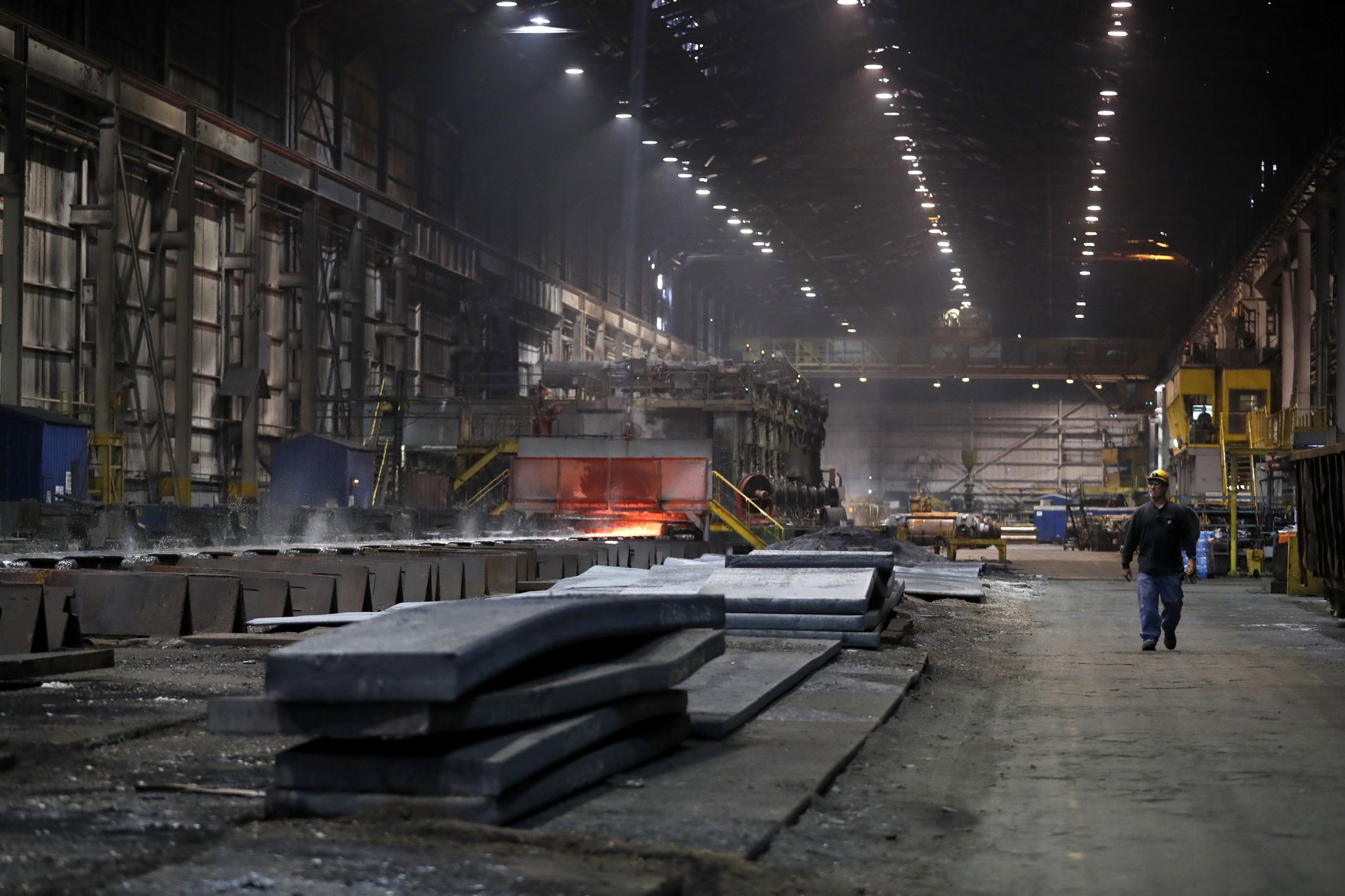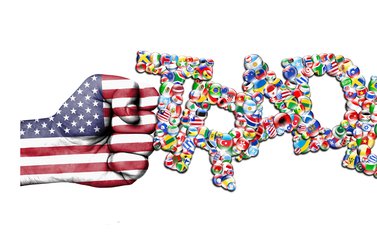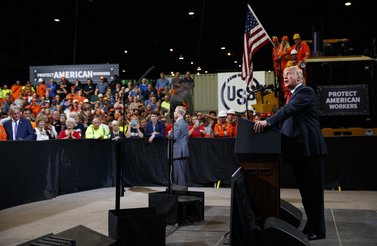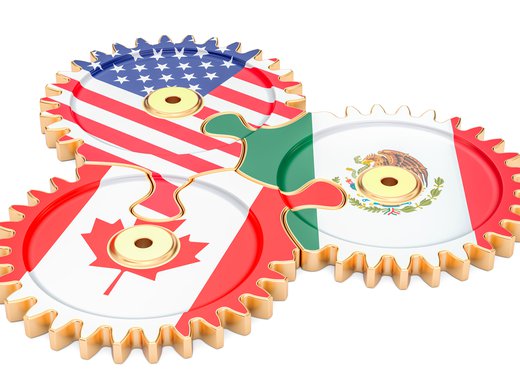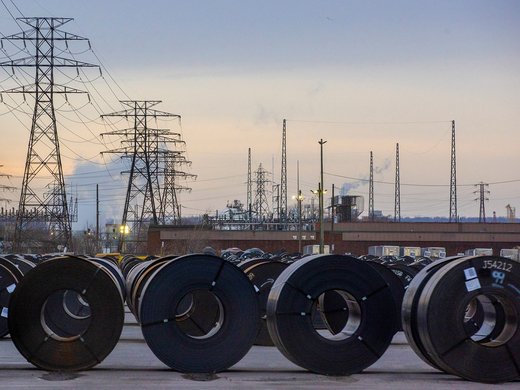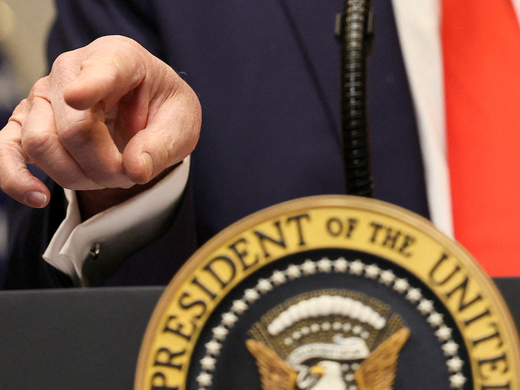On Monday, in a major breakthrough, US steel and aluminum tariffs imposed roughly a year ago on Canada and Mexico were officially lifted, removing a key obstacle to approving the new North American free trade agreement.
Struck on Friday, the deal eliminated a 25 percent tariff on steel and a 10 percent tariff on aluminum imposed last June by the United States on Canadian and Mexican imports, duties it had adopted based on controversial national security grounds. Canada also agreed to drop retaliatory tariffs, which were adopted last July, on an estimated CDN$16.6 billion in imports of US steel, aluminum and many other products, including yogurt, roasted coffee, orange juice, mayonnaise, toilet paper and more.
Both sides also agreed to cancel pending litigation under consideration at the World Trade Organization on the issue of whether the United States can impose tariffs based on national security grounds.
Last year, Canadian Prime Minister Justin Trudeau argued that it was “insulting” to suggest that Canada was a national security threat to the United States. On Friday, speaking at a Stelco Holdings Inc. steel plant in Hamilton, Ontario, Trudeau struck a more conciliatory tone, suggesting that the agreement could pave the way for the ratification of the Canada-United States-Mexico Agreement (CUSMA), which replaces the North American Free Trade Agreement. The “new NAFTA,” as Trudeau calls it, was agreed to in principle by the three countries in November.
“As we look at moving forward with the new NAFTA, it didn’t make a lot of sense to continue to have tariffs on steel and aluminum between our countries,” Trudeau told steelworkers. “This is pure good news.”
In the months leading up to the agreement, the three countries privately squabbled over a long-standing US demand to require limits on Canadian and Mexican steel and aluminum exports to the United States.
Gary Clyde Hufbauer, a senior fellow at the Peterson Institute for International Economics in Washington, noted that the United States had been pushing to restrict steel and aluminum imports to the United States to 2017 and 2018 pre-tariff levels.
On its face, Friday’s agreement appears to be a win for Canada, as the deal allows only for consultations to be requested initially “in the event that imports [to the United States] of aluminum or steel products surge meaningfully beyond historic volumes of trade.” If the two sides failed to reach an agreement, the importing country could go back to imposing 25 percent and 10 percent duties on steel and aluminum, respectively.
Hufbauer contends that in reality the agreement doesn’t represent a dramatic shift in the direction of free trade; instead, it would be more accurate to describe the future trade relationship between the two countries as managed trade, which involves a complex set of tariffs and import quota restrictions.
A key issue involves industry expectations that, based on demand, Canadian steel and aluminum exports to the United States are expected to naturally increase beyond historic levels. However, the provision, while not a direct quota restriction, could ultimately have the impact of limiting Canadian steel and aluminum exports to the United States, at least as long as the agreement is in place.
Hufbauer says it will be up to Canadian and Mexican authorities to implement this managed trade — to talk to the steel and aluminum companies in their respective countries and say “don’t ramp up your exports, because you will just bring a load of trouble on your head.”
“The purpose of the fuzzy language is to suggest that we are back to free trade,” Hufbauer said. “But we’re not. This is managed trade, but done so in an opaque way so it stays out of the public eye.”
Expect US regulators, helped by the domestic steel and aluminum industry, to carefully track the prices and volume of Canadian exports to the United States, to confirm that they don’t exceed historic levels. The ultimate goal for the United States is to ensure that steel prices in North America — in the United States, in particular — remain well above global prices. The tariffs so far have had the impact of raising US steel prices above global levels. The Peterson Institute estimated in a January study that the gap between the US steel producer price and US import prices, which reflect world steel prices, rose to 10 percent by December 2018.
Hufbauer contends that steel- and aluminum-consuming industries, such as auto manufacturers and beer producers, shouldn’t celebrate the new deal.
“The competition will be reduced by [virtue of the fact] that the prices in Canada and Mexico, if not already at US levels, will come up to the US level,” Hufbauer said. “It is a government-organized cartel. In addition, [Canada and Mexico] will limit their own exports to the US.”
A key provision in the agreement seeks to avoid the “transshipment” of steel and aluminum made outside of Canada and the United States to either country. In addition, both countries are agreeing to prevent the importation of steel and aluminum that is “unfairly subsidized” and might impact prices. Canada and the United States are setting up oversight and enforcement mechanisms to prevent the importation of steel and aluminum “sold at dumped prices.”
The People’s Republic of China isn’t mentioned in the joint Canada-US statement, but the provision seeks to target Beijing specifically. The measure and agreement emerged — not coincidentally, perhaps — as broader trade talks between US President Donald Trump and Chinese President Xi Jinping have stalled. One of the goals of the measure is to ensure that if China dumps low-priced steel on the global market, it won’t find its way to the United States through Canada or Mexico.
“I think Canada has already moved to limit transshipping and dumping and this agreement only solidifies the restriction,” Hufbauer said.
In comments to Canadian steelworkers in Hamilton, Trudeau put a spotlight on the tougher transshipment and dumping restrictions.
“We’ve committed…to work with the Americans and the Mexicans to look at the global steel and aluminum market, where we recognize significant challenges from other countries, to make sure that we are protecting our workers, our industries here in Canada,” Trudeau said. “It’s a continued commitment…to prevent the various ways [dumping] can happen in Canada.”
For now, Canadian steel and aluminum producers can breathe a sigh of relief as the restrictions disappear, at least in the short term. The markets consider the deal a win for Canada — Stelco’s share price shot up 20.3 percent to $13.95 a share after news of the agreement.
However, that win may be short-lived, considering that US steel and aluminum manufacturers and US regulators will be keeping an eagle eye on the situation, to ensure that Canadian steel and aluminum manufacturers don’t exceed historical export levels. If they do, expect to see consultations, followed by hefty tariffs.
